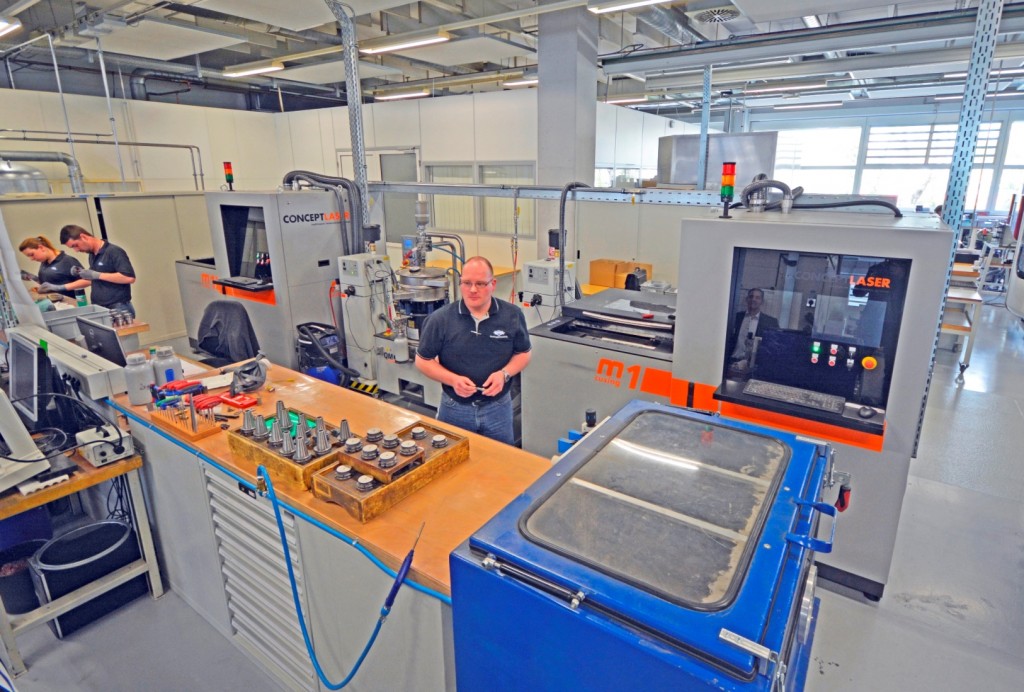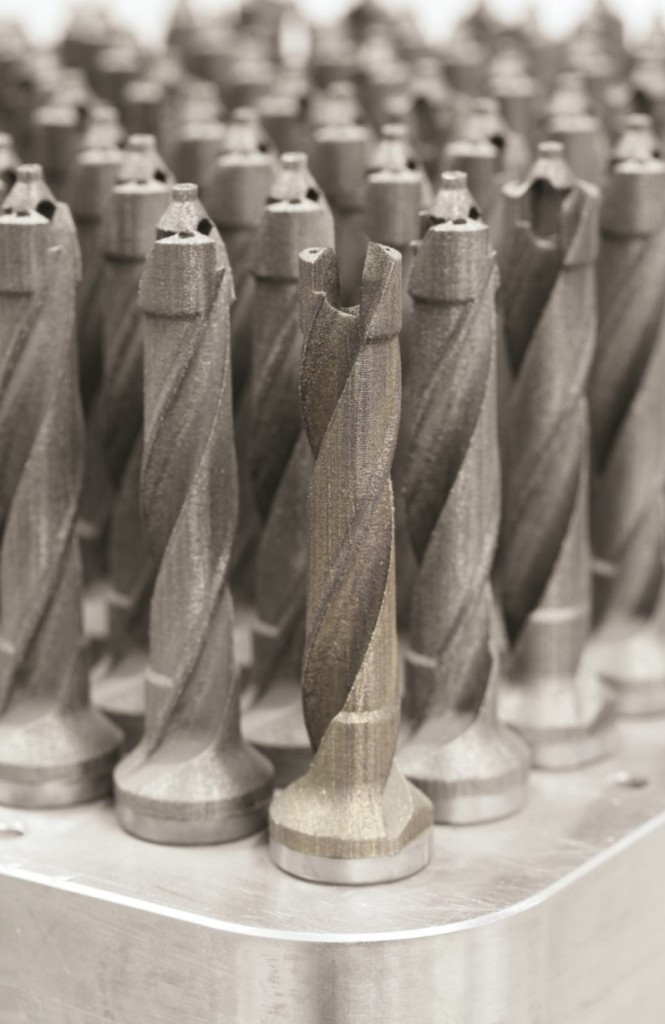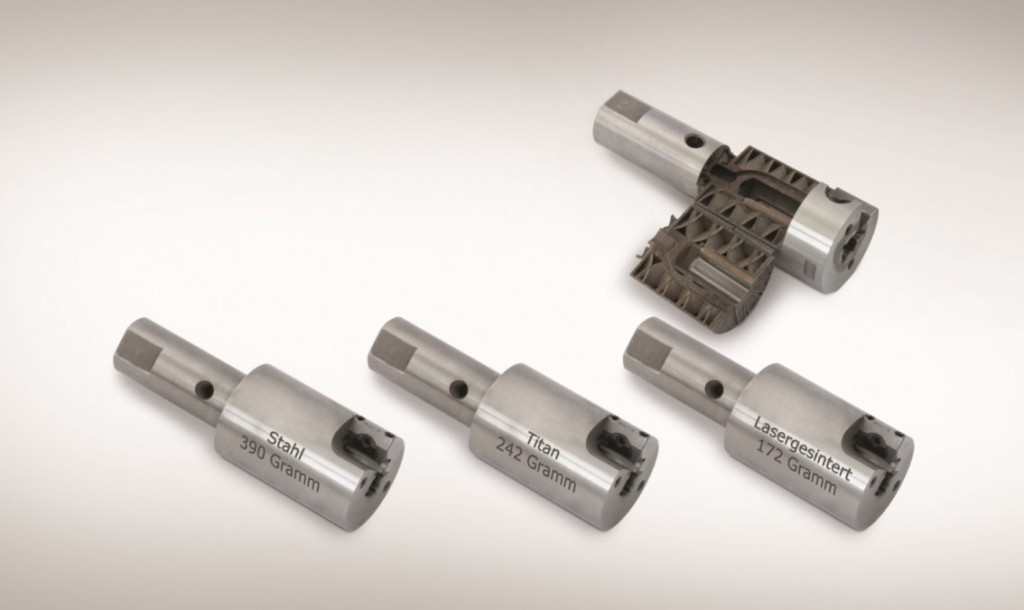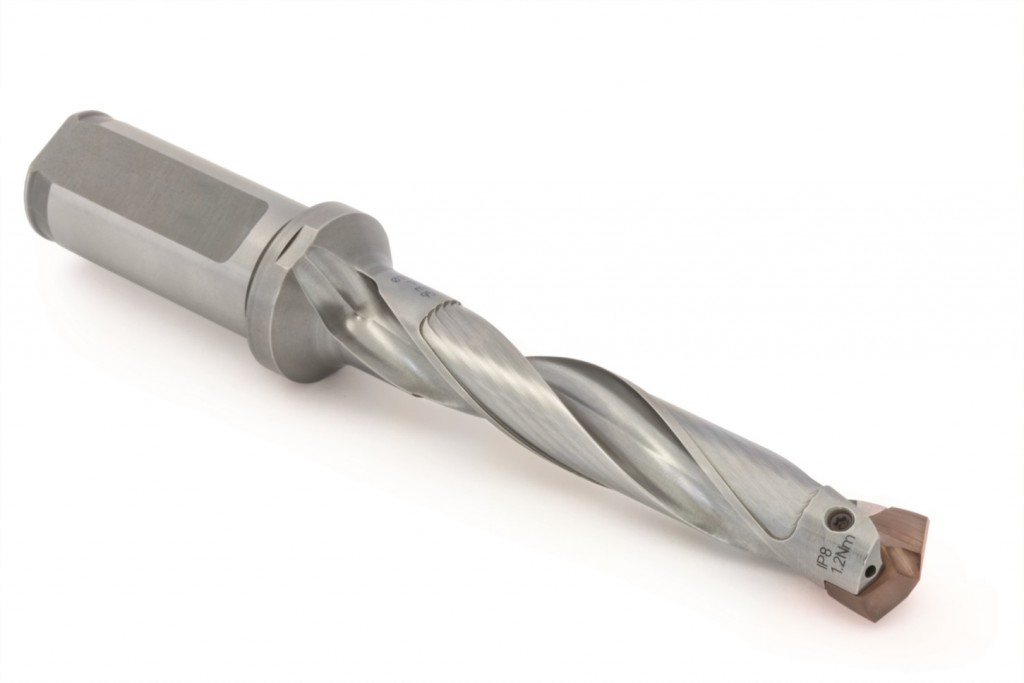Although we aren’t always aware of it, the number of companies using 3D printing for end-use manufacturing of parts is constantly growing. Most of the times, they rely on AM to produce industrial components and tools; however, the first commercial end use products are arriving and, this time, we are not talking about toys or experimental designs and decorative items, but serious QTD insert drills from Mapal, 3D printed in metal with Concept Laser’s LaserCUSING technology.
This case study shows exactly how and why additive manufacturing can be integrated into a company’s workflow, not just for prototyping, but for actual serial manufacturing of superior complex parts. Up until now, the insert drill QTD had only been available with a 13 mm minimum diameter and it was characterized by a central cooling duct in its basic body.
The smaller the basic tool body, the more the central coolant supply system impairs the performance of the tool. The central coolant supply weakens the core of the drill and makes it unstable. Furthermore, the cooling ducts have to be made increasingly smaller. This results in a decreased flow rate for the coolant to the cutting edge. Basic steel tool bodies with spiral cooling ducts that are common in solid carbide tools are not yet common in small diameters.
By implementing LaserCUSING selective laser melting technology, Mapal was able to produce basic bodies in the diameter range from 8 to 12 mm with spiral cooling ducts. “The additively manufactured insert drill has a cooling concept with spiral ducts, which improves the cooling performance,” said Dr. Dirk Sellmer, Head of Research and Development at Mapal.
“Compared with the previous central coolant supply with y diversion,” he continued to explain, “a spiral coolant routing increases the coolant flow by 100%. It also increases the core stability with coolant ducts, which run parallel to the flute. The cooling is also improved by the new coolant duct profiles which deviate from the usual circular form with a slightly triangular shape. That optimizes the geometrical moment of inertia and the flow rate. Tests found that choosing a cross section of this type increases the flow quantity by 30%. Coolant profiles like this cannot be produced conventionally. The coolant flows at a pressure of 1.6 to 3 bar.”
Maple was, thus, able to produce something that could not have been manufactured in any other way, but this is only the beginning of the story. Another significant aspect to consider is that Mapal has brought the additive manufacturing process in house by purchasing two M1 systems from Concept Laser. These are medium size machines that have a build envelope of 250 x 250 x 250 mm. The QTD insert drills are created as 10×10 or 11×11 unit solutions, which means that 100 to 121 drills are produced in one set-up, with build rates between 6 and 18 cm³/h. This is true serial manufacturing.

Beyond the fact that the geometry could only be reproduced by AM, the reason why the process is so cost-effective is that Mapal actually implemented a hybrid strategy. The tool shank is machined conventionally and the drill is laser melted. “Hybrid strategies are the ideal method of choice,” said Dr. Sellmer. “Simple component parts are machined and more complex areas are then built up additively.”

The technical advantages for using additive manufacturing, and specifically LaserCUSING’s high potential for topological modifications go even beyond the shape of the insert drill, affecting the internal shapes and structure of the part. “The ideal drill is very hard outside and somewhat flexible inside,” Dr. Sellmer said. “Laser melting makes it possible to generate selective thicknesses and then harden the surface with heat treatment and to create a cellular or honeycomb structure inside if necessary. That makes ductile lightweight solutions and e-modules possible, which we cannot produce conventionally.”
In this process, the core of an insert drill is built with the cooling system, which is added to the conventional shaft. In a second additive run, the outer hull is built up with higher densities. “This is almost the perfect drill – hard on the outside and soft on the inside. We combine ductility with high tensile strength and hardness.” Dr. Sellmer concluded. Judging by the dramatic difference that AM can make on the small and complex geometry of Mapal’s QTD insert drill, many more manufacturers of metal parts are soon going to adopt 3D printing. Good thing Concept Laser just recently launched its largest 3D printer to date.




